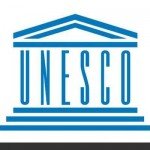From hieroglyphics to alphabets, sign language to phonetics, from stone tablets to electronic ones and gurukulas to online learning,a lot has changed over the ages when it comes to learning. Be it the medium of delivery or the infrastructure, the world has seen a sea of change. What is going to be the future of learning? Is learning going to evolve into other forms which we are yet to fathom? Some answers can be found when we look back into the evolution of learning.

History of education in India
In India, specifically, learning can be traced back to the Vedic period from about 1500 BC to 600 BC, where most education was based on the Veda and later Hindu texts and scriptures. Education, which at first was freely available in the Vedic society, became, over time, more discriminatory. The caste system, originally based on occupation, evolved, with the Brahman (priests) forming the most privileged lot. The teaching encouraged an exploratory form of learning where students were encouraged to not settle for an answer to one question but discover many more during the journey.
A formal school kind of learning was later introduced in the form of the gurukula system of education which supported traditional Hindu residential schools of learning, typically the teacher’s house or a monastery. At the gurukulas, the teacher imparted knowledge of religion, scriptures, philosophy, literature, warfare, statecraft, medicine, astrology and history to young students.
Around the world, education followed a similar evolution, starting from being restricted to certain aspects of society like politics, warcraft, religion, and to a certain class of society which could afford it. In many countries and societies, it was restricted to only male children. During later periods, education was democratised and made available to all.
How has education changed today?
While the earliest schools were more concerned with imparting socialisation and rudimentary education of young children, today’s schools around the world mould students to be job-ready. The debate of whether this form of education is serving the purpose is perennial. The only place where this belief has been challenged is with the Montessori system where each child’s learning quotient is taken into account, rather than mass instructing them in a kindergarten.
Irrespective of the way we instruct, the end goal seems to be the same: to prepare today’s children for tomorrow. Here is the million-dollar question/comment by former United States Secretary of Education Richard Riley:
“We are currently preparing students for jobs that don’t yet exist… Using technologies that haven’t been invented . . .In order to solve problems we don’t even know are problems yet.”
This needs no proof. Just one look back into our times reveals that almost 90per cent of the jobs that we presently have didn’t exist 10 years ago. Then what did we prepare for while at school?
I am not in any way undermining the importance of schools in today’s society; all I am saying is that we have an important challenge ahead which is to ensure that our learning is current. A school or a college is, for many, still a place where you go to have your head filled with ‘certainties’—a core knowledge base — which grows increasingly irrelevant to the world we live in. Most students do not relate to what they are taught, and have no interest in lessons that have no meaning or relevance in their lives.
Learning that’s based on passion works
Down the ages, this has been proven time and again: students will never learn unless they are engaged, and are passionate about what is being taught. The story of Ekalavya has its own special place in Indian mythology. This young tribal boy was so passionate about learning archery from Guru Drona, despite being rejected as his student, that he practised his skills in front of a clay image of the Guru. He became so accomplished that his skills surpassed even the famed Arjuna’s. The story goes that Drona had promised Arjuna that no one would vanquish him in archery, and he was forced to ask Ekalavya to cut off his thumb, so that Arjuna’s dream would be fulfilled.
In today’s world too, passion motivates and inspires, and students who find their lessons meaningful will learn much faster. This is why hands-on classes, where learning is through activities and not by rote, work better. The love for learning is an important prerequisite that educators of the 21st century must kindle and keep alive.
Learning never ends
Welcome to the world of continuous learning. With a small tweak, Darwin’s Theory is as relevant today as it was years ago:
“It is not the strongest of the species that survives, nor the most intelligent that survives. It is the one which constantly learns and unlearns.”
The emphasis is on constant or continuous learning. This kind of learning has to be most relevant, quickly accessible (unlike years of debate in the corridors of education ministry, planning and then implementing), and also should support multiple pedagogies.
I go back to my early comment where I assured you that when we look back into the evolution of learning, we will figure out where it’s headed. Societies flourished when education was democratised. That’s going to be the future too: democratisation of education through the quickest possible medium, supporting different learning styles and helping people achieve their independent learning outcomes.
New-age learning is changing the world
The whole concept of online learning revolves around this and hence the frenzy. The advent of technology has made it easier to make learning available to everyone irrespective of geographical, physical or monetary barriers.
With time, there is a possibility that the so-called schools and colleges which stick to the conventional form of learning will remain structures of brick and mortar which will be approached only as a qualifier and not for any useful learning. Learning in the next century will be outside these walls, at your pace, suiting your style and breaking all geographic and language barriers.
The way forward
Organisations that are providing training and education have to keep in mind that the only way they can thrive in the educational space is by providing curated quality content. The emphasis is on curated content rather than just having random content and letting the customer choose. Making a marketplace offering might not be the most optimal method, because the customer will only learn from having made a bad choiceand, by then, he or she would generalise all the content on the platform as unworthy.
In this wake, edtech startups should emphasis on the need for continuous education and create a market for it. More than anything else, an organisation that creates this thought shift from a ‘learn when you need it’ to ‘continuous learning’, will be the clear winner. Unless continuous learning becomes a natural choice of a learner, there is no way he or she can adapt to the quick changes and stay ahead. Like John Dewey said,
“Education is not preparation for life; education is life itself.”
All this will be built on robust technology which can potentially surpass any challenge in terms of accessibility and usability across the globe. Students will learn using an unlimited library of tools and devices, and education will lose all the shackles that society has today imposed on it. Tomorrow’s world will embrace the dynamics of deep, appropriate and engaging learning that changes lives and, above all, makes sense.
About the Author:
Madarapu Nagaraju is a Co-founder and Director at KnowledgeHut. With over seven years of experience, he possesses a bias for innovation and has an ability to connect the dots between thinking up strategies and executing them on the ground. He has played a pivotal role in building international alliances and expansion of the learning business overseas from one centre in Bengaluru to over 90 countries. A strong proponent of the lean practices, he strongly believes in the quote: “Simplicity is the ultimate sophistication.”
[“source-yourstory”]





